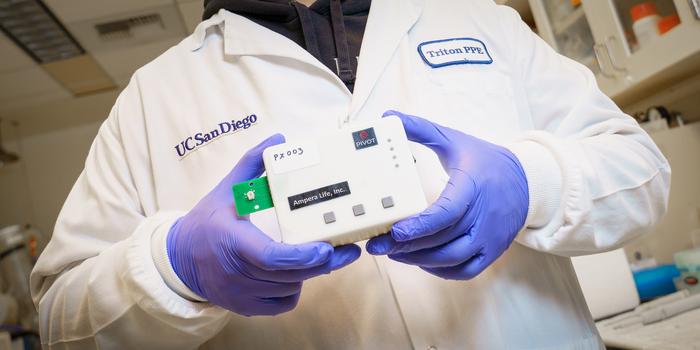
In a comprehensive analysis spanning two decades, researchers have uncovered that serum uric acid (UA) concentrations and the prevalence of hyperuricemia have exhibited remarkable stability among adolescents in the United States. This longitudinal insight, meticulously documented in a recent study published in Pediatric Research, challenges prior assumptions about the possible upward trajectory of serum UA levels amid changing lifestyle and environmental factors over recent years. The stability of these biomarkers in this demographic offers a fascinating window into adolescent metabolic health and its broader implications for chronic disease risk.
Uric acid, a metabolic byproduct of purine nucleotide degradation, gains attention for its role in oxidative stress and inflammation, factors closely intertwined with various cardiometabolic conditions. Elevated serum UA, or hyperuricemia, is often implicated in gout but more broadly serves as a potential indicator of systemic metabolic dysfunction. Given the rising incidence of obesity, metabolic syndrome, and type 2 diabetes in younger cohorts, understanding trends in serum UA among adolescents becomes not only a matter of academic curiosity but also of substantial public health importance.
The study leveraged data from nationwide surveillance programs, ensuring a representative cross-section of US adolescents. By examining serum UA levels consistently assessed over a twenty-year span, the research team was able to detect nuanced temporal trends—or the lack thereof. What emerged was a surprising picture of relative equilibrium: despite societal changes in diet, physical activity, and other environmental exposures, serum uric acid concentrations remained largely unaltered.
.adsslot_KOAQRpwP8Z{ width:728px !important; height:90px !important; }
@media (max-width:1199px) { .adsslot_KOAQRpwP8Z{ width:468px !important; height:60px !important; } }
@media (max-width:767px) { .adsslot_KOAQRpwP8Z{ width:320px !important; height:50px !important; } }
ADVERTISEMENT
Such findings run counter to the hypothesis that adolescent metabolic markers are worsening in line with the obesity epidemic and shifts toward more sedentary lifestyles. Traditional risk factors theoretically predispose youth to elevated uric acid through mechanisms involving insulin resistance, impaired renal clearance, and increased endogenous purine turnover. Yet, the data suggest that these forces may be offset by as yet unidentified modifiers or that serum UA is resilient within certain homeostatic bounds during adolescence.
It is crucial to delve into the biological underpinnings of this stability. The kidneys play an essential role in uric acid excretion, and during adolescence, renal function undergoes maturation that could influence serum UA kinetics. Additionally, hormonal fluctuations intrinsic to puberty could modulate uric acid metabolism, possibly maintaining a balance amidst varying external influences. These physiological nuances may contribute to the steady trends observed, highlighting the intricacy of adolescent metabolic regulation.
Furthermore, diet remains a pivotal factor influencing uric acid production. Consumption patterns of fructose-rich beverages, red meat, and seafood—foods known to elevate UA—have undergone significant shifts in recent decades. However, public health initiatives aiming at reducing sugary drink consumption and promoting healthier eating habits might have tempered potential increases in serum UA. This near equilibrium suggests a complex interplay between risk exposure and lifestyle modifications at the population level.
Technological advancements in laboratory assays for measuring serum uric acid have also improved the precision of monitoring trends. The study’s methodology incorporated standardized protocols, minimizing inter-laboratory variability and enhancing the reliability of longitudinal comparisons. Such rigor is indispensable to confidently assert the observed temporal stability rather than artifacts related to measurement inconsistencies.
Despite the encouraging picture of stable serum UA, vigilance remains warranted. Adolescents are forming health trajectories that influence adult morbidity, and hyperuricemia, while stable in prevalence, still represents a clinical risk if elevated levels persist or transition into adulthood. Close monitoring and continued research can elucidate whether the observed stability continues, especially under evolving environmental and genetic landscapes.
Moreover, the absence of rising UA concentrations among adolescents contrasts with some adult populations where hyperuricemia rates have increased. This discrepancy raises intriguing questions about the developmental timing of UA dysregulation and associated pathophysiology. It suggests that early intervention or modulation during adolescence might prevent or delay the adverse metabolic sequelae often seen in later life.
The study also prompts a reevaluation of uric acid’s role as a biomarker in adolescent populations. While it remains a critical clinical parameter, its utility in predicting metabolic syndrome or cardiovascular risk among youth may require recalibration in light of these stable population metrics. Future investigations might focus on dissecting subgroups that deviate from the norm or exploring alternative biomarkers that better capture metabolic disturbances in adolescence.
In parallel, the genetic determinants influencing serum UA concentrations warrant further exploration. Polymorphisms in genes encoding urate transporters, such as SLC2A9 and ABCG2, have been linked to interindividual variations in UA levels. Understanding how these genetic factors interplay with environmental exposures over time could shed light on the mechanisms preserving serum UA homeostasis despite external challenges.
Environmental exposures beyond diet—such as exposure to endocrine-disrupting chemicals, socioeconomic factors, and physical activity trends—may also modulate serum uric acid regulation indirectly. The absence of upward trends in serum UA could reflect complex compensatory mechanisms or the impact of multifaceted public health strategies aimed at mitigating various metabolic risk factors simultaneously.
Importantly, the research also underscores the need for continued surveillance of adolescent health indicators using robust, population-based datasets. Only through sustained, longitudinal efforts can subtle shifts be detected that may herald emerging health concerns. The study serves as a testament to the value of such epidemiological genomic integration in tracking metabolic health parameters.
Public health stakeholders can draw cautiously optimistic conclusions from these findings, recognizing that despite the myriad challenges facing adolescent health, certain metabolic markers like serum uric acid have remained stable. This offers a window of opportunity to reinforce positive behavioral changes, emphasize early screening for at-risk individuals, and maintain momentum in combating metabolic diseases from a young age.
Ultimately, the study enriches the discourse surrounding adolescent metabolic health, balancing the narrative of worsening health trends with evidence of metabolic resilience in specific domains. It invites a more nuanced understanding that adolescence, as a critical developmental stage, harbors both vulnerabilities and strengths shaped by an intricate interplay of biology, environment, and policy.
As the medical community continues to grapple with the global burden of metabolic diseases, such research provides foundational knowledge essential to crafting targeted interventions. The stable serum UA trends among US adolescents spotlight the subtlety of metabolic homeostasis and the complex dynamics that govern it, warranting deeper investigative and clinical focus in future years.
Subject of Research: Trends in serum uric acid levels and prevalence of hyperuricemia among US adolescents over the last 20 years.
Article Title: Trends in serum uric acid among US adolescents.
Article References:
Li, J., Qian, X., Vinturache, A. et al. Trends in serum uric acid among US adolescents. Pediatr Res (2025).
Image Credits: AI Generated
DOI:
Tags: chronic disease risk factors in teenagersdietary influences on uric acid levelshyperuricemia trends in US teensimplications of elevated uric acidlongitudinal studies on uric acidmetabolic health in young populationsobesity and metabolic syndrome in adolescentsoxidative stress and inflammation in youthpediatric health research findingspublic health concerns for adolescentspurine metabolism and adolescent healthserum uric acid levels in adolescents







No Comments
Leave a comment Cancel